In real battles, a fighter will make use of any enemy's resources the moment he defeats him. For this reason if a Swordsman captures an Archer, he would get his bow and become a bowman. Likewise, if a swordsman or Archer were to capture a Warrior, then that fighter would lay claim to his horse and become a mounted warrior himself.
This situation is simulated in khan:
Under Game..Rules turn the 'capture promotions' rule on to transform the game into a real-life scenario, thus applying the following capture rules:
 captures
captures 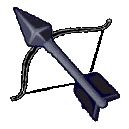
 promotes himself
to
promotes himself
to 
 captures
captures 
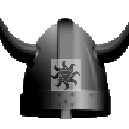
 promotes himself to
promotes himself to 
 captures
captures 

 promotes himself to
promotes himself to 
 captures
captures 

 promotes himself to
promotes himself to 
 captures
captures 
 promotes himself
to
promotes himself
to 
 captures
captures 

 promotes himself to
promotes himself to 

 [khan sword]
[khan sword] 
 [khan archer]
[khan archer] This new rule dramatically changes the landscape of the game. The strategy becomes much different. Board situations that look like sacrifices, are actually not the case.
For example, in the situation below, the white bondsman at D4 is actually not in a losing position, even though it is in direct line of fire by the black archer at D5:
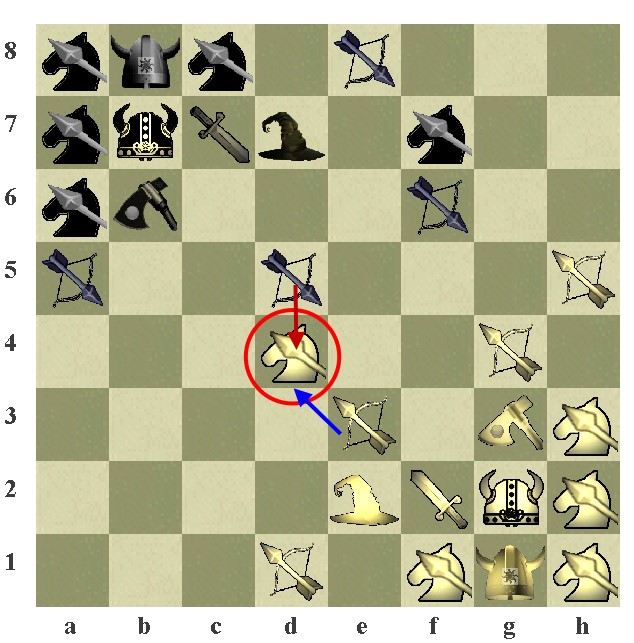
If the black archer captures the white warrior at D4, it promotes itself to a warrior.

But then the white archer also takes the new black warrior and promotes himself to a warrior.

The net result: both sides have lost an archer and none have gained any relative material.
Example capture promotions
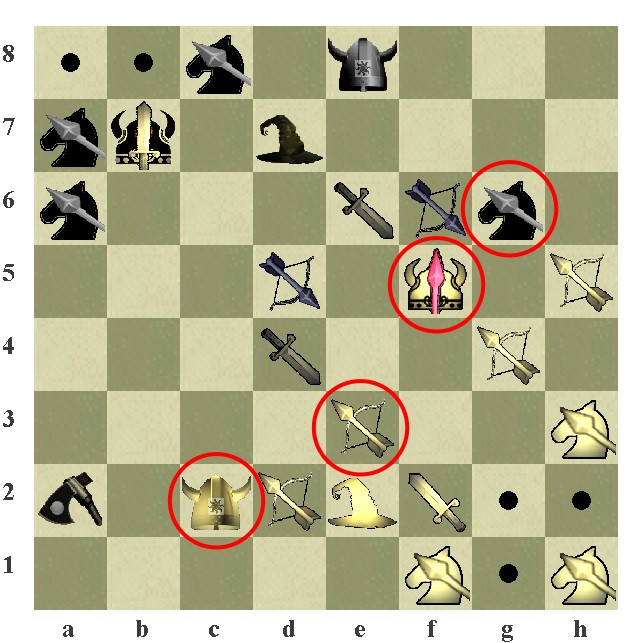
In the above scenario, the pieces circled in red are targets for capture promotions:
 x
x 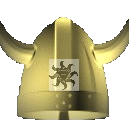 =
=  [A2 x C2]
[A2 x C2]
 x
x
 =
=  [D4 x E3]
[D4 x E3]  x
x
 =
=  [E6 x F5]
[E6 x F5]  x
x  =
=  [F5 x G6]
[F5 x G6]
Summary
The capture rules make for more complex game analysis on part of the player, but are more challenging to play. In particular, CAPTURE PROMOTION logic discourages undefended attacks by higher order pieces (like Warrior). Unsound trades (Warrior x Warrior) result in devasting losses of material, when lower order pieces like the archer promote themselves on the trade.
By default, CAPTURE PROMOTIONS are turned OFF.